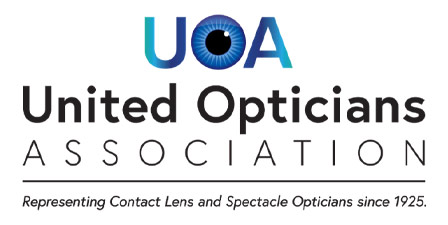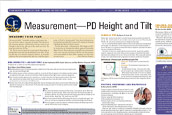By Jonathan Winnegrad, ABO-AC, NCLE-AC

David Foster Wallace’s "This Is Water" speech uses the metaphor of fish and water to highlight how the most fundamental aspects of our existence often go unnoticed. In the story, two young fish swim past an older fish who greets them with, "Morning, boys. How’s the water?" After a while, one of the young fish turns to the other and asks, "What the heck is water?" This illustrates how the most pervasive elements of our lives can become so familiar that they become invisible to us.
Applying this metaphor to opticians, it suggests that, like the young fish, opticians might focus primarily on the technical aspects of their job—such as providing eyewear solutions—without fully recognizing the broader significance of their role. While expertise in eyewear is crucial, opticians must also understand that their impact extends beyond just correcting vision. They play a pivotal role in their patients' lives by addressing their needs, understanding their concerns, and offering personalized care.
To build lasting relationships with patients, opticians should go beyond mere transactions and focus on the overall patient experience. The true value lies in how patients feel throughout their interactions, not just in the technical accuracy of their eyewear. Building trust and rapport involves actively listening, empathizing with their concerns, and making them feel valued and cared for. By combining technical skill with genuine empathy and supportive care, opticians can foster enduring relationships where patients return not only for their eyewear needs but also for the compassionate, attentive service that truly supports their well-being.
Common Blind Spots:
- Overemphasis on Technical Expertise: Opticians often prioritize technical proficiency and product knowledge, overlooking the importance of creating a welcoming and empathetic environment. While technical skills are essential, a singular focus on them can prevent opticians from recognizing how crucial emotional support and personal connection are in enhancing the patient experience. We have all heard the relationship saying that “nobody cares how much you know until they know that you care.” This applies more to eyecare than one may realize.
- Assuming Uniform Patient Needs: Opticians might fall into the trap of treating all patients as if they have the same needs and preferences, rather than appreciating each individual's unique concerns and preferences. This one-size-fits-all approach can lead to missed opportunities for personalized care and meaningful interaction. Diversity is a wonderful thing and the flavor of life. Doesn't it make sense that patient needs, wants and preferences are as unique as the patients in our practices?
- Neglecting the Emotional Impact of Eyewear Issues: Opticians might underestimate the emotional and psychological impact of vision problems on patients. They may focus solely on the technical solutions without considering how vision issues affect patients' daily lives and emotional well-being, thereby missing the chance to provide more holistic and supportive care. It is a magical thing to instill confidence in a child apprehensive of how their eyeglasses make them look. They could have the best prescription and product in the world but if they do not wear them because they feel silly it is all in vain. I would argue that instilling confidence is one of the most important things that their optician can do.
I used to love watching one of my favorite opticians George interact with his patients. He would sit them down and before trying to help them with anything let them know that all he has ever done is opticianry for 30 years. He would then let them know that he would be honored and love to be their optician meeting all of their eyecare needs. Before you knew it, he would be laughing and squealing with delight as they went from wanting to get their Rx and leave to trying on frames and finding their new look! Now there is a fish that knew he was swimming in water and doing it marvelously.












